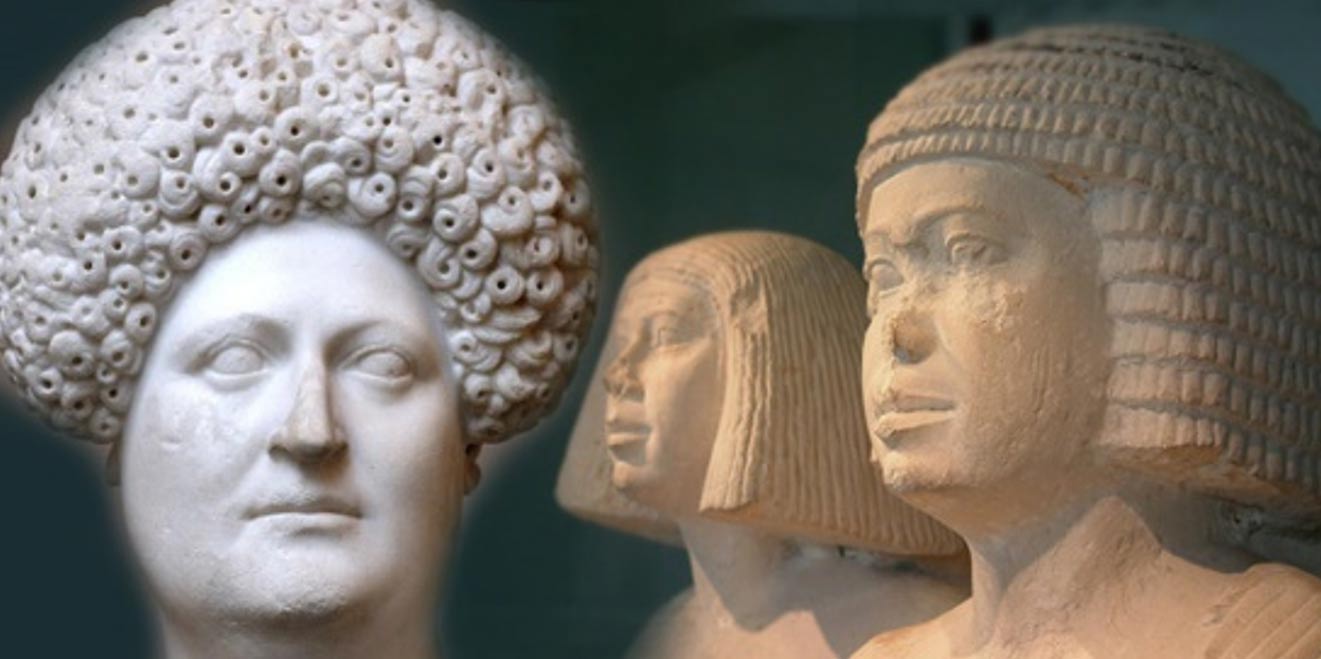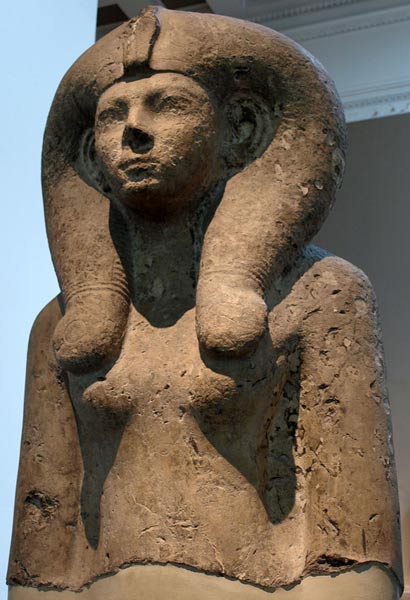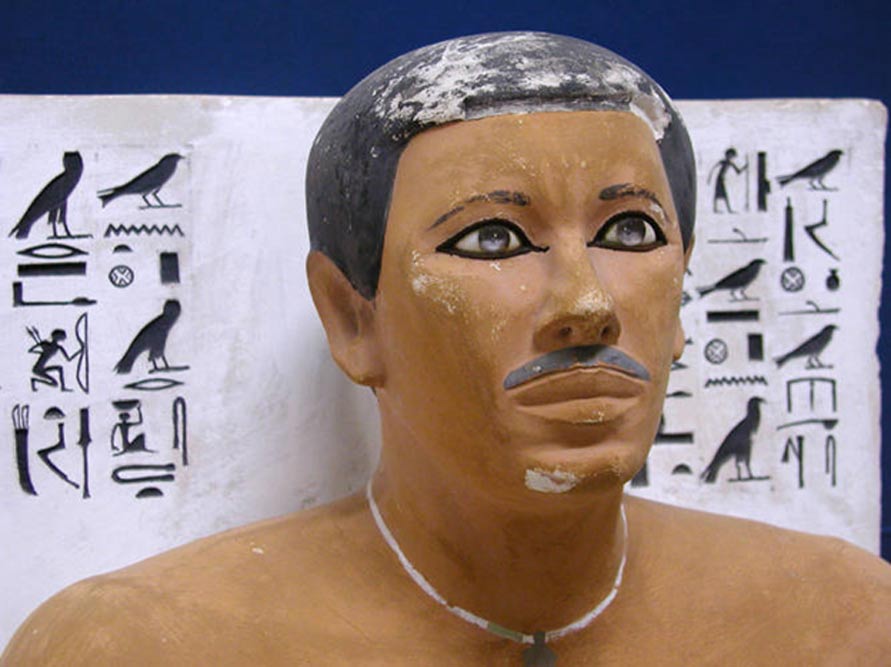
Big Wigs and Hairpieces: Artificial Hair of the Ancient World
For thousands of years humans have been reinventing their image with various headdresses, wigs, hair extensions and hats, for a multitude of purposes. Preserved wigs reflect the fashion and cultural expressions of societies, and reveal the everday lives of the ancients.
Ancient Egyptian Wigs
The most ancient of wigs and hairpieces dating back to early recorded history were made and worn by the Ancient Egyptians. Wigs were worn for a variety of reasons, but were a mainstay and essential part of a wardrobe—especially for the elite of society—as wearing a wig indicated high status.
It is often said the heat of the region caused people to shave their heads and faces in Ancient Egypt, and they then wore wigs to protect their heads from the sun while remaining cool. However, styles varied and heads were only sometimes shaved, whereas other times short hair was worn underneath wigs or false hair extensions. As such, wigs weren’t solely a protective headcover. They played a significant role as fashion statements and served as social signifiers.

Colossal bust of Queen Ahmes-Merytamun (Ahmose-Meritamon), wearing a Hathor-wig. 18th dynasty, circa 1550 BC. (CC BY-SA 3.0)
Why Wear a Wig?
The trappings of hair had social and religions connotations in Ancient Egypt. In the early dynasties natural beards were favored, but eventually the fashion changed to a clean-shaven look, and mustaches were uncommon.
- Legendary Locks: Can Hair Act as a Sixth Sense, Protecting us from Danger?
- Mummy hair reveals ancient Peruvians enjoyed seafood and beer
- 3,300-year-old Egyptian woman with hair extensions discovered in Armana
A shaved head was a sure sign of nobility, and the majority of Ancient Egyptians kept their heads covered. Head shaving later spread to the rest of the population as customs of higher society trickled down. In fact, having a hairy, unshaven face became a mark of low social status (unless one was in mourning, or was about to travel abroad).

Ancient Egyptian men were generally clean shaven, and a shaven head was a sure sign of nobility. Rahotep a Third Dynasty official, was believed to be in the minority with his moustache. (Public Domain)
The nobility shaved their heads and faces, and wigs were worn. For special occasions wigs were combined with elaborate headdresses. So tied to royalty and elite status was this practice, that Egyptian law forbade servants and slaves from shaving their heads or wearing wigs.




